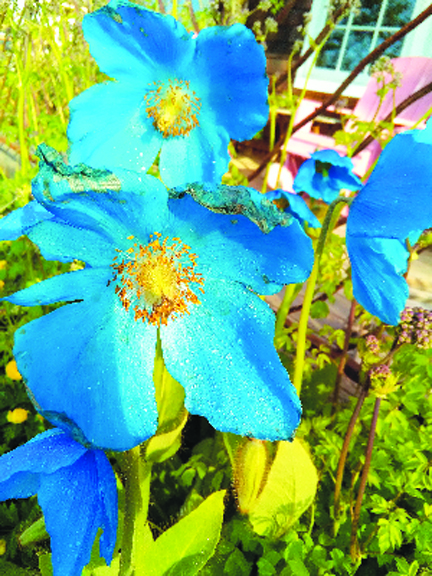There are basic truths that bear repeating:
• Keep your garden small;
• Weed, if you can;
• Water, if you have it; and
• People, just shake your tomato plants. That’s all it takes to fertilize the bloom and you will have more tomatoes than you know what to do with. Keep your electric toothbrush in the bathroom.
Now that we have that out of the way, let’s get started.
I’m seeing empty greenhouses. Perhaps the owners inherited it from the previous residents and have no interest. I can understand that. Perhaps the owners were all gung-ho, discovered how much work is involved and, like a garden that is too big, were overwhelmed. I can sort of understand that. Perhaps the intention was for a storage shed. I cannot understand that, but it is a possibility.
Perhaps someone could start a program where people with empty greenhouses on their property could rent them out to people who don’t have one and want to give it a go without the investment. Perhaps this is something that could happen through the Farmers Market?
What you need to learn from empty greenhouses is that they are not for everyone. They are labor intensive. Expensive both in the initial capital investment and the subsequent operation. Those will be some mighty pricey tomatoes. Think about this.
On the other hand, the greenhouse here is lovely. Five tomato plants, three cucumbers, Royal Burgundy beans and basil. There are still a few heads of lettuce, although they are looking too hot. Too much heat makes lettuce weak and flabby. Everything else has found a home in the garden.
I keep the greenhouse as cool as I can get it during the day, i.e. the door and both vents are wide open and the fan comes on with a thermostat. I’m still closing it up at night. I have found that my particular set-up needs plenty of water. Visitors often comment that maybe things look a little too wet and I let them have their say. The proof is in the produce and there is plenty of that. The plants are growing in compost that gets replaced every year and I will occasionally feed them a very dilute solution of fish emulsion. I gently give a quick shake to the tomatoes every time I walk past them.
If you are considering a greenhouse, do your homework. Think small with the possibility of adding on if you feel the need. Get it built over the summer so it will be ready to go next spring. Plan.
I’ve taken floating covers and solar umbrellas off everything except the cole crops. Those still need protection from the fly that lays the root maggot. I’m hoping that all will be well because with these amazing temperatures the plants are growing leaps and bounds. If the cole crops (broccoli, cauliflower, cabbage, kale, etc.) get too warm they will “button,” which is like spinach “bolting” and lettuce will go to seed faster than you can blink. They will develop a little tiny head instead of something you can actually harvest and eat. It will be a waste of time and effort.
So there is a fine line there of when to remove the floating row cover. Those at higher elevations will need to leave theirs on longer because the temperatures are cooler, but at the lower elevations you need to be thinking about removing it. The artichokes, beans and pumpkins are now open to the elements. They are on their own. Wish them well.
I have a new-ish neighbor and this is their second year in the house and, hence, their second garden ever. It is lovely. It’s small, manageable and both the flowers and vegetables are very pretty. What more can you ask for? Everything about it makes sense. The owners both work and when they come home they want to garden, not kill themselves. Think hard about the size of your garden. Just because you are on acreage does not mean you need to garden all of it. Fence off a reasonable plot and have fun. Let the rest go wild.
Weeds: I’ve been dealing with a few around here. The perennials are so chockablock that the weeds are shaded out. I have to dig around to find them and still miss a few, but they let me know they are there. Every morning I walk around and pull out whatever is obvious. You can do this too. Really.
I know we are in shock over the spruce aphid infestation, but look down. There are spruce seedlings covering every inch of bare ground, just like when the spruce bark beetles hit. And alders, and elders — by the hundreds. It won’t take long for this landscape to change dramatically without our intervention. Interesting.
I had a computer glitch and had to dash down to Tech Connect to get the ball rolling. The guy (he wouldn’t share his name so from now on he will be the TC Guy), who does not garden, takes a look at the screen saver, which is my garden (surprise, surprise), and instantly asked the most stunning question. A question that I have never heard before. Ready? “How long did that take?” Hunh. How wonderful is that?
The TC Guy actually realized that there is time involved in this garden. That it didn’t just happen. That this isn’t instant gratification. That there are some things that can’t be Googled. I am not a hugger, but the TC Guy got a hug. I hope I can inspire him to start his own garden.
A small one.
Rosemary Fitzpatrick is a longtime Homer gardener. She has been writing Kachemak Gardener since 1990.


